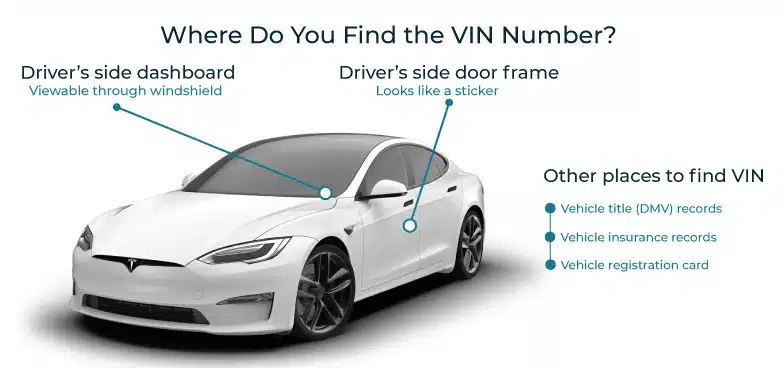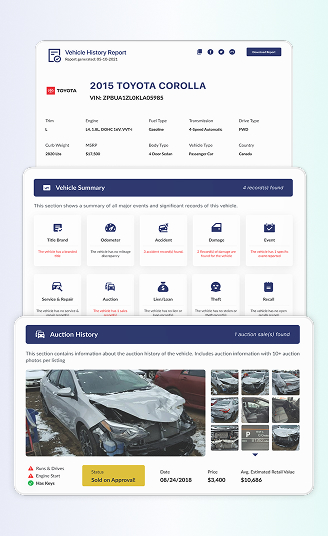
Saleen Recall Check
Before the next mile, confirm your Saleen is recall-free. Detailed Vehicle History’s Saleen Recall Check reveals active safety notices, known defects, and remedy status, helping you prevent issues early, protect resale value, and enjoy every journey with peace of mind.
What is a Saleen Recall?
A Saleen recall is a safety fix ordered by the company or the U.S. government when a part or system could cause harm or fails to meet federal standards. It’s not optional, and it’s not a paid repair. Authorized dealers must perform the remedy at no charge.
If your Saleen is older, remember the public VIN tool only lists incomplete safety recalls from roughly the last 15 years (with limited exceptions). That’s why checking both the VIN in the Detailed Vehicle History matters when you’re buying or maintaining a Saleen.
Why You Should Check the Saleen Recall History?
of the vehicle you are considering purchasing. With this check, you can quickly identify if the car has any outstanding recalls that may pose a safety risk.
Addressing any open recalls promptly is critical, as it can prevent potential safety hazards and ensure peace of mind while on the road. Additionally, a recall-free vehicle may have a higher resale value in the future. By conducting a Saleen Recall Check, you can make a more informed decision and prioritize safety down the road.
Below are some extra reasons why you should check the recall:
Avoid Unsafe Saleen
Any vehicle can develop safety problems, and Saleen is no exception. A quick recall check tells you if your car has any outstanding campaigns that affect safety. If it does, schedule the no-cost fix and keep the service record. It’s a simple step that helps make sure your Saleen is safe for you and your passengers.
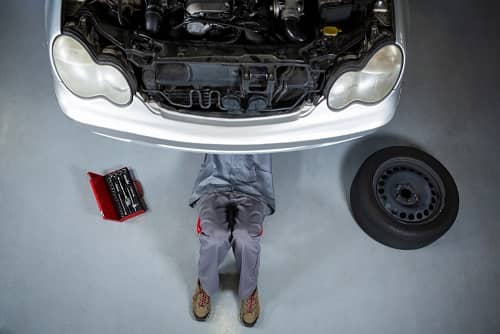
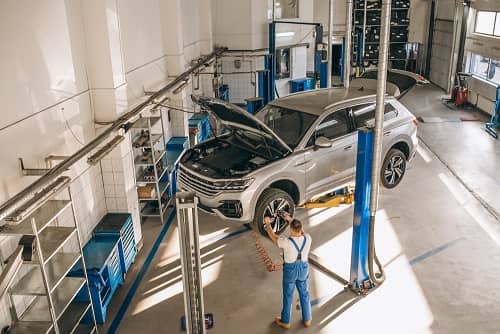
Compliance
Run a recall check before you commit. By law, automakers must alert owners to safety defects and provide free repairs. Confirming your Saleen’s recall status helps you avoid paperwork problems, supports insurance and financing, and protects resale value. A Saleen with open recalls may not meet federal safety standards, which can make ownership and future sale more complicated.
Avoid Out-of-Pocket Repair Bills
Run a Saleen recall check before you buy or sell. Safety defects are fixed free by the manufacturer, which can save you thousands compared to paying for similar repairs yourself. Giving you peace of mind.

How to Run Saleen Recalls?
Discovering your Saleen recall report is just a minute away! Follow these easy steps to get the information you need quickly and effortlessly:

Find your Saleen VIN
You'll need your Vehicle Identification Number (VIN) ready. Look on the driver’s side dashboard (through the windshield) or the driver’s door jamb. You can also find the VIN on your title, registration, or insurance card. Our lookup works for classic and current Saleen models.


Enter your details
Type your VIN in the form above. No VIN handy? Use your license plate number instead.


Receive Your Saleen Recall Report
We’ll show any open Saleen recalls immediately, plus key details and next steps. If a recall is listed, book the free repair at an authorized Saleen dealer for peace of mind.
What is on the Saleen Recall Check?
In your Detailed Vehicle History, the Saleen recall check lists any safety recalls tied to your vehicle. Each entry shows the announcement date, the affected component, and the recommended next steps.
Explore the details below for more information:
- Date of recalls: Shows when Saleen and NHTSA issued the recall, helping you judge urgency and confirm our data is timely, accurate, and decision-ready.
- Affected Component: Identifies the exact Saleen part involved, so you know what’s wrong and can discuss repairs confidently with any dealer or mechanic.
- Remedy: Details the manufacturer’s free fix. You’ll see where to go and what’s covered, reducing hassle and avoiding out-of-pocket surprises.
- Next step for the affected Saleen: Confirm if your Saleen is listed under the recall and schedule repairs. With a complete Vehicle Report, you’ll also see past recalls and repair status.
A Saleen vehicle history report also includes vehicle summary & details, mileage records, lien/loan records, title brand check, and more. Review the records below for more details:
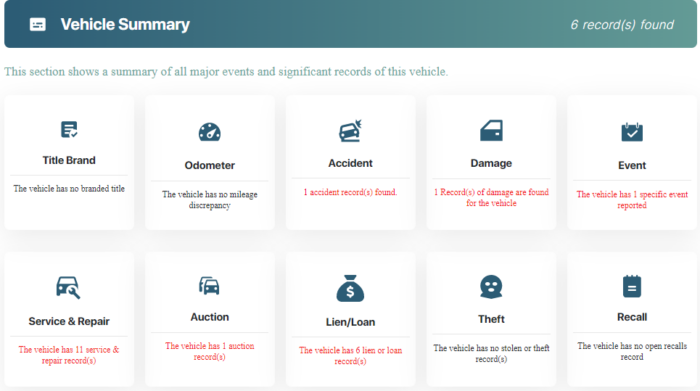
Vehicle Summary & Details
A quick snapshot of your Saleen: year, model (S281, S331, S7, etc.), body style, engine, drivetrain, and key options. Think of it as the car’s ID card. It helps you confirm that the Saleen being sold matches its description and that any recall info shown really applies to this exact vehicle.
Mileage Records
See if the miles of the Saleens march forward and spot weird drops or plateaus that suggest a rollback. With low-production Saleens, mileage accuracy is a huge part of value, so this section is your reality check.


Title Brand Check
See big red-letter labels issued: salvage, rebuilt, flood, lemon/buyback, junk, fire, hail, and more. Even for a rare Saleen, a branded title impacts safety, insurability, and value. If a recall is still open, a branded title can also complicate dealer repairs, good to know before negotiating.
Theft Records
If a Saleen was ever reported stolen (and recovered), it should appear here. Theft history can affect title status, insurance, and buyer confidence. For rare models like an S7 or a numbered S281. This section can be surprisingly important. Collectible classics get targeted.


Warranty Status/Coverage
Outlines any remaining or applicable coverage tied to the Saleen or its base-vehicle components (where relevant), and reminds you that safety recalls are free regardless of warranty. If a recall is open, you’ll know to book the fix without worrying about cost.
Service and Maintenance Records
Repair logs can show recall closures and related work. Evidence that the vehicle was kept safe and current.

Common Issues Leading to the Saleen Recall
Saleen vehicles have faced several recalls due to safety and reliability concerns. Common issues include the fire risk, loss of braking, and other notable issues.
When checking for a Saleen, several factors come into play. Here’s a breakdown of elements that could affect your Saleen and lead to a recall:
Fire Risk
The fuel rail crossover hose may crack and leak (S331 Supercharged, 2007)
- What happened: On some S331 Supercharged trucks, the fuel rail crossover hose could have localized weak areas, cracks, and leak raw fuel.
- Risk: Fuel leak + ignition source = fire.
- Models/years/volume: 2007 S331 Supercharged; 129 vehicles potentially affected.
- NHTSA ID & dates: 08V542; owner notifications were planned on/around October 20, 2008.
- Remedy: Saleen supplied an updated fuel rail assembly; repairs performed by Saleen-certified Ford dealers.
The cooling fan control box can overheat (S331 Supercharged, 2007)
- What happened: The Saleen-designed fan wiring harness could allow excessive current through the control box.
- Risk: Control box overheating → potential fire.
- Models/years/volume: 2007 S331 Supercharged; 72 vehicles.
- NHTSA ID & dates: 07V008; recall began January 19, 2007.
- Remedy: Dealers installed an additional harness to prevent overheating.
Loss of Braking
Front stainless-steel braided brake lines may leak or separate (S281 family, 2005–2006)
- What happened: The end fittings of the front hydraulic brake hoses could leak or separate.
- Risk: Partial/total loss of front brakes without warning.
- Models/years/volume: 2005–2006 S281 coupe/convertible with 14″ or 15″ brake upgrades; includes 2006 S281 Supercharged, 2006 S281 Extreme, 2005–2006 S281 3-Valve (14″), 2005 S281 Supercharged (14″); 851 vehicles.
- NHTSA ID & dates: 06V146; owner letters began May 3, 2006 (completed July 7, 2006).
- Remedy: Dealers replaced the front stainless-steel braided lines free of charge.
Hood Separation/Visibility Hazard
Hood bolts can loosen at the latch/hinge (S281 Supercharged, 2005)
- What happened: Bolts fastening the hood latch/hinges to the fiberglass hood could become loose.
- Risk: The hood may loosen or separate from its latch/hinge while driving → crash hazard.
- Models/years/volume: 2005 S281 Supercharged; 339 vehicles.
- NHTSA ID & dates: 05V413; mfr report September 16, 2005; owner notification expected September 26, 2005 (campaign began September 2005).
- Remedy: Dealers replaced the hood bolts.
Other Notable Issues
Front side marker lamp placement (S7, 2003–2004)
- What happened: The S7’s front side marker light was positioned too far rearward, not “as far forward as practical,” violating FMVSS 108.
- Risk: Reduced side visibility to others, especially at night/angles.
- Models/years/volume: 2003–2004 Saleen S7; 24 vehicles.
- NHTSA ID & dates: 05V049; recall expected to begin April 2005.
Remedy: Dealers relocated the marker lamp further forward on the bumper
Understanding the Saleen Recall Process
NHTSA reviews safety complaints and, when a defect is confirmed, the automaker must issue a recall under NHTSA oversight. You can then check your Saleen by VIN and get a free remedy at a dealer.
Discover the full breakdown of the Saleen Recall Process below:
Report the Problem
Notice something unsafe on your Saleen? File a complaint with NHTSA. Your report is logged, compared across VINs, and helps trigger formal investigations.
Investigation
Once a complaint is submitted, the NHTSA follows a multi-step process to determine whether a recall is necessary.
- Screening: NHTSA’s Office of Defects Investigation reviews patterns in complaints and other data.
- Analysis: Defect petitions are reviewed in detail. If denied, the decision and reasoning are publicly posted in the Federal Register.
- Investigate the Issues: When Saleen’s safety concerns are confirmed, NHTSA launches a formal investigation, ending in either no defect or a recall.
- Recall Management: NHTSA ensures owners are notified and monitors repair completion rates.
Recalls
A safety recall means the manufacturer must inform owners and correct the problem. Recalls happen when a vehicle or component is unsafe or doesn’t meet regulations. Most are voluntary, and manufacturers are required to repair, replace, refund, or buy back the affected vehicle.
How Saleen Vehicle Recalls Are Handled?
When a safety problem is found on a Saleen, three groups work together: the manufacturer, NHTSA, and you, the owner.
This teamwork finds defects, informs drivers, and makes sure fixes are completed to keep your vehicle safe and legal. Below is a detailed breakdown of each role:
Automaker Role
Saleen is responsible for finding the defect, deciding the fix, filing the official paperwork, and making sure parts and instructions reach dealers. After NHTSA accepts the campaign, Saleen mails owner letters that explain the risk, remedy, and timing.
For the small-batch like S331 recall, the company supplied updated parts and specified that repairs could be handled by Saleen-authorized or Ford-certified dealers. Useful if you live far from a specialty shop. Saleen also must send NHTSA quarterly completion reports and keep communications (owner letters, dealer bulletins) on record.
If you already paid to fix the exact problem before the recall, Saleen’s notice outlines reimbursement steps and a contact line to resolve issues. In short, they design the remedy, fund it, and coordinate repairs, because safety defects aren’t on you, they’re on the manufacturer.
NHTSA’s Role
NHTSA is the federal referee. It reviews complaints, opens investigations when patterns look risky, and oversees recalls to make sure owners are told and cars get fixed. The agency runs the public recalls portal and the VIN tool, but that tool focuses on incomplete safety recalls from roughly the last 15 calendar years and may have gaps for small-volume brands.
That doesn’t reduce your right to a free remedy; it just means you might need to read the official campaign or call a dealer for older Saleens. NHTSA also monitors campaign progress and can request additional actions if completion rates lag. If a manufacturer doesn’t follow through, NHTSA can escalate.
Your Role as the Vehicle Owner
Your role is simple but important. If something feels off, report it to NHTSA. Next, run a Saleen Recall Check. If your vehicle shows an open recall, book the free repair and bring the notice, your VIN, and any receipts (if you already paid for the same repair, you may be eligible for reimbursement).
Keep your contact info current so owner letters reach you. While you wait for parts or scheduling, follow any interim guidance in the notice (limit use, park outside, etc.).
For older Saleens, where they use classic VINs, you can use Detailed Vehicle History, and we can decode even for the VINs that have fewer than 17 characters. When the work’s done, keep the paperwork. Closing the recall on your VIN protects safety and resale value. Simple steps, real peace of mind.
Get Saleen Window Sticker by VIN
Go beyond recalls. A Saleen Window Sticker shows original specs, trim, factory options/packages, color codes, equipment (including safety items), and original MSRP (when available).
Use it to confirm authenticity, match the seller’s claims, and spot missing features before you pay. One VIN, a clearer picture, and stronger negotiating power.
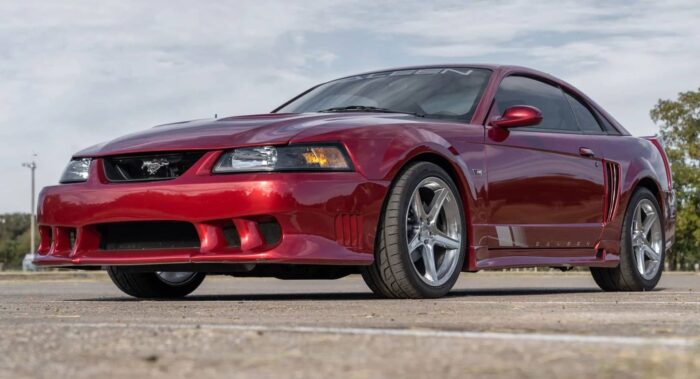
Why Use Detailed Vehicle History to Check Saleen Recall?
A recall alone doesn’t tell the whole Saleen story. We show open/past campaigns alongside events, mileage progression, prior listings, and theft or salvage records, so you can spot red flags and verify claims fast.
Use VIN or plate, get a clean summary plus the details that matter. Safer choices, stronger negotiations, and fewer surprises after the handshake.
Recall Check For Others Manufacturers
FAQ about Saleen Recalls Check
How do I check my Saleen recall status by VIN number?
To check a Saleen vehicle for a safety recall using Detailed Vehicle History, follow these simple steps:
- Go to Detailed Vehicle History and open Saleen Recall Check.
- Enter your 17-digit VIN (from the dash, door jamb, or paperwork). We can also decode the classic VINs, which have fewer than 17 characters
- Tap Search VIN.
You’ll see whether your Saleen has any open recalls, what the issue is, and the next step (how to book the free fix). If nothing’s open, the report will say so.
Can I use my license plate to check Saleen recalls?
Yes. Use Detailed Vehicle History’s license plate lookup. Enter the plate and state, and we’ll convert it to the VIN and show your Saleen’s recall status. You’ll also get helpful history details (ownership, title brands, mileage, accidents) so you can judge safety and value with one simple search.
Are Saleen recall repairs really free?
Yes. Safety-recall remedies are performed at no charge by the authorized network (Saleen or designated dealers). It’s a legal obligation overseen by NHTSA.
Is it safe to drive my Saleen with an open recall?
Drive only if the notice says it’s safe until repaired. Fire risks and loss-of-control issues deserve immediate attention. Book the free fix now.
Do Saleen recalls expire?
The record doesn’t “expire,” but the public VIN tool focuses on incomplete recalls from the last 15 calendar years and may omit some small-manufacturer items. Ask a dealer to check your VIN against the campaign ID.
How long do Saleen recall repairs take?
Simple software/wiring fixes can be under two hours; parts replacements vary. Your notice will estimate labor time, e.g., ~1.5 hours in one 2007 campaign.
What happens if I ignore a Saleen recall?
You risk injuries, fires, or loss of control, and your car may fail inspection or lose value with an open safety defect. Get it done. It’s free.
Can I take my Saleen to a Ford dealer for recall work?
Often yes. Ford dealers handle Ford VIN-tied recalls on the underlying vehicle. Saleen-specific recalls are coordinated by Saleen, though certain campaigns have permitted Ford dealers to perform the fix. Follow your recall letter; repairs are free.
Significant aftermarket changes can delay completion.
Can a dealership sell a Saleen with an open recall?
For new vehicles, no. Federal law bars dealers from selling a new car with an open safety recall. For used cars, federal law does not prohibit sales with open recalls, so you must check the VIN yourself and ask the seller to complete the free fix before delivery.
How do I check if a used Saleen I’m buying has any open recalls?
Run the VIN through the official NHTSA recall lookup, then confirm with the seller’s service records. This shows open safety recalls and helps you verify if work was completed. Pairing that with a full history report gives added context before you buy.
What if a dealer refuses or delays my Saleen recall repair?
Start by contacting the brand’s customer service to escalate the appointment. If there’s no fix yet, follow the safety guidance in the notice and ask to be placed on a parts waitlist; you can also file a complaint with NHTSA and keep checking the VIN for updates. Repairs are free once parts are available.
What if a dealer refuses or delays my Saleen recall repair?
Start by contacting the brand’s customer service to escalate the appointment. If there’s no fix yet, follow the safety guidance in the notice and ask to be placed on a parts waitlist; you can also file a complaint with NHTSA and keep checking the VIN for updates. Repairs are free once parts are available.
Can I get a loaner or alternative transportation for a Saleen recall repair?
A loaner isn’t guaranteed by law. Some automakers or dealers offer one, (especially for serious risks or long delays) but policies vary. Ask your dealer what they can provide and document your request.
How do Saleen reimbursement policies work if I have already paid?
It depends on what you paid for.
- Parts returns: request an RMA first, return within 30 days, items must be new/in original packaging; some orders (custom/special/pre-order) are non-returnable.
- Unauthorized returns may face a 15% restocking fee; refunds go to the original payment method (or store credit if that’s not possible).
- Warranty work: go to a Saleen-authorized dealer; the dealer files the claim and, once approved, Saleen pays parts/labor (timing can be affected by state law).
- Ford components may fall under the Ford factory warranty. Out-of-pocket repairs done without prior authorization are typically not reimbursed.

